After a busy day exploring some of the lesser but still fantastic temple ruins of the Angkor Archaeological Park, it was time to tour its highest profile sites: Angkor Wat, Angkor Thom and Ta Prohm. Originally we thought about renting bicycles for the day, but ultimately went by tuk-tuk to spare ourselves heat exhaustion. Getting an early start, but skipping that whole sunrise thing, we joined thousands of tourists at the world’s largest religious building, Angkor Wat.
Angkor Wat was built in the early 12th century by King Suryavarman II at the peak of the Khmer Empire’s power. Dedicated to the Hindu god Vishnu, the massive structure served as a royal temple, and later as the king’s mausoleum. Angkor Wat is surrounded by an impressive moat and an outer wall. Visitors cross a sandstone causeway and enter through the West Gate past a well-preserved statue of eight-armed Vishnu. A long walkway leads to the central temple, a three-story structure with a series of galleries topped with five lotus-shaped towers that reach 65 meters from the ground. Linked porticoes ring the outside of the temple and feature extraordinary bas-relief wall carvings depicting scenes from Hindu mythology. It’s worth the time to walk the entire 800 meters around the temple to admire the less crowded sections.
The iconic towers are reached by a steep staircase where guards enforce a strict dress code and exhort visitors to take precautions climbing. Though crowded with tourists, the large galleries allow everyone to spread out and admire the view from many angles. Several Buddha images remain inside the towers and, despite the posted “no access” signs, worshipers clamored through doorways to leave offerings and pray.
After the Cham Vietnamese sacked Angkor Wat at the end of the 12th century, King Jayavarman VII built a grand new capital, Angkor Thom. Covering an area of 10 square kilometers, this city was surrounded by a 100-meter-wide moat and walls eight meters high. Each of the five entrance gates is topped with a tower bearing the eerie stone faces for which the complex is known. Lining the bridges across the moat are larger-than-life representations of the Churning of the Ocean of Milk, where demons and gods are engaged in an epic tug-of-war. Near the center of the complex stands Bayon, the royal temple of Jayavarman VII. While the sprawling structure may not look like much from a distance, up close you can appreciate the 216 faces of the Bodhisattva Avalokiteshvara staring down from 54 towers. Having seen too many adventure movies, I half expected the stony visages to start moving.
To the west of Bayon is the fairly well reconstructed Baphuon temple, said to represent mythical Mt. Meru (the Khmer version of Mt. Olympus). It is reached by a sandstone walkway elevated by hundreds of pillars. When restoration work first began, the temple was taken apart piece by piece. Then the brutal Khmer Rouge seized power and all records on the temple were destroyed. When efforts to restore the temple could begin again, there were 300,000 stones to reassemble and no instruction manual. They seem to have done a pretty good job! North of here is the Terrace of Elephants – the royal viewing platform for public ceremonies – and the Terrace of the Leper King – thought to have been the royal crematorium. Opposite here is a series of towers between which tightrope walkers would have performed for the king.
Leaving Angkor Thom through the eastern Victory Gate, we headed to atmospheric Ta Prohm, nicknamed the “Tomb Raider temple” thanks to the movie scene filmed there. The jungle is reclaiming Ta Prohm, with trees growing everywhere and their massive roots snaking through walls and strangling the stone. Once again, I appreciated the late afternoon light which filtered through the trees, and the diminished crowds which allowed for peaceful reflection and undisturbed poses imitating Angelina Jolie.
Our tuk-tuk driver took us to Restaurant Muk Neak for lunch because he knew the owner and we are so glad he did. We ordered the chicken amok and the flavor was so delicious that we drizzled the sauce over our rice and left no drop behind. Muk Neak’s take on lok lak – beef and onions sauteed in an oyster sauce marinade – was simple but tasty. The seasoned meat was tossed with rice and topped with a fried egg, the runny yolk creating a rich sauce.
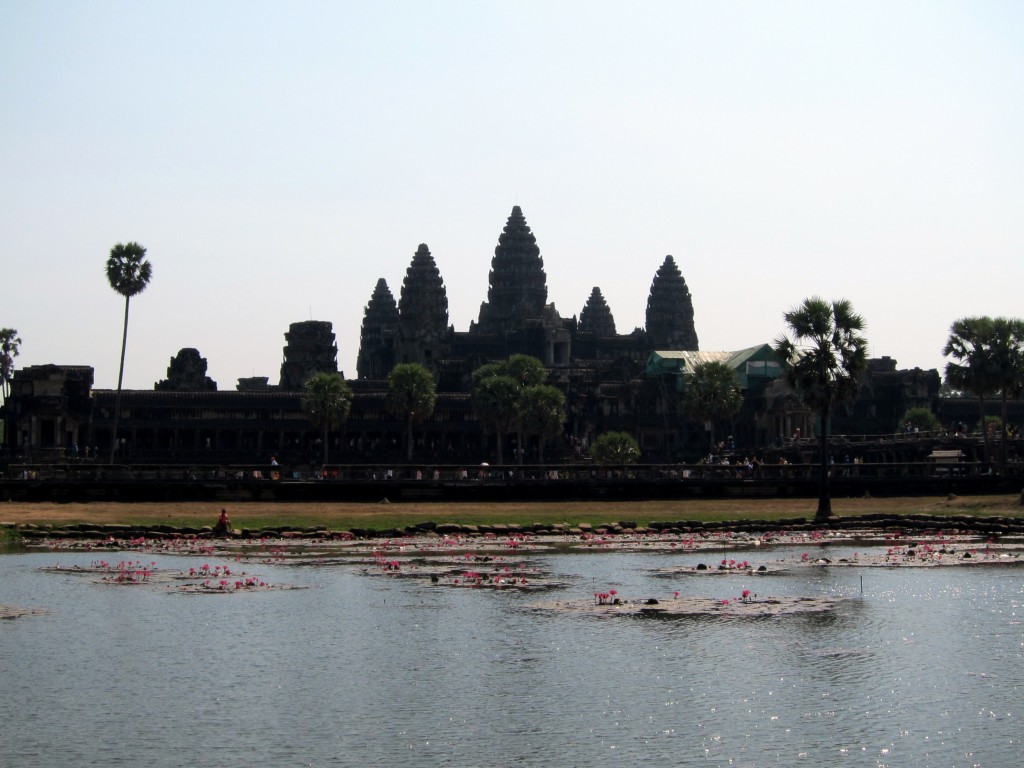
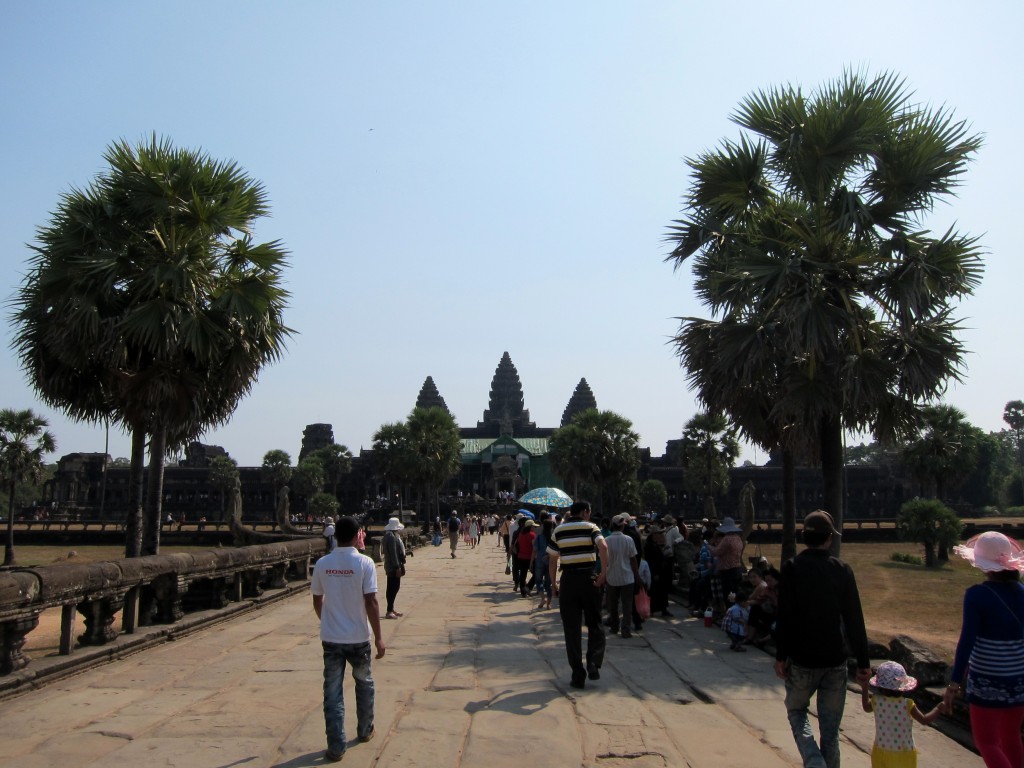
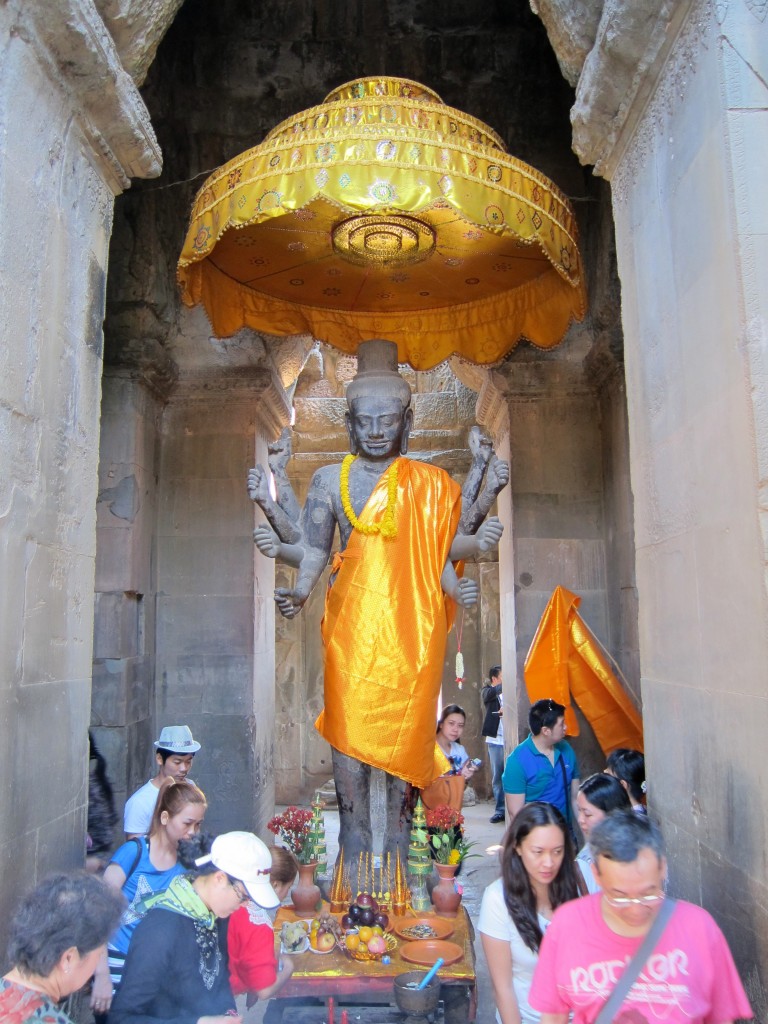
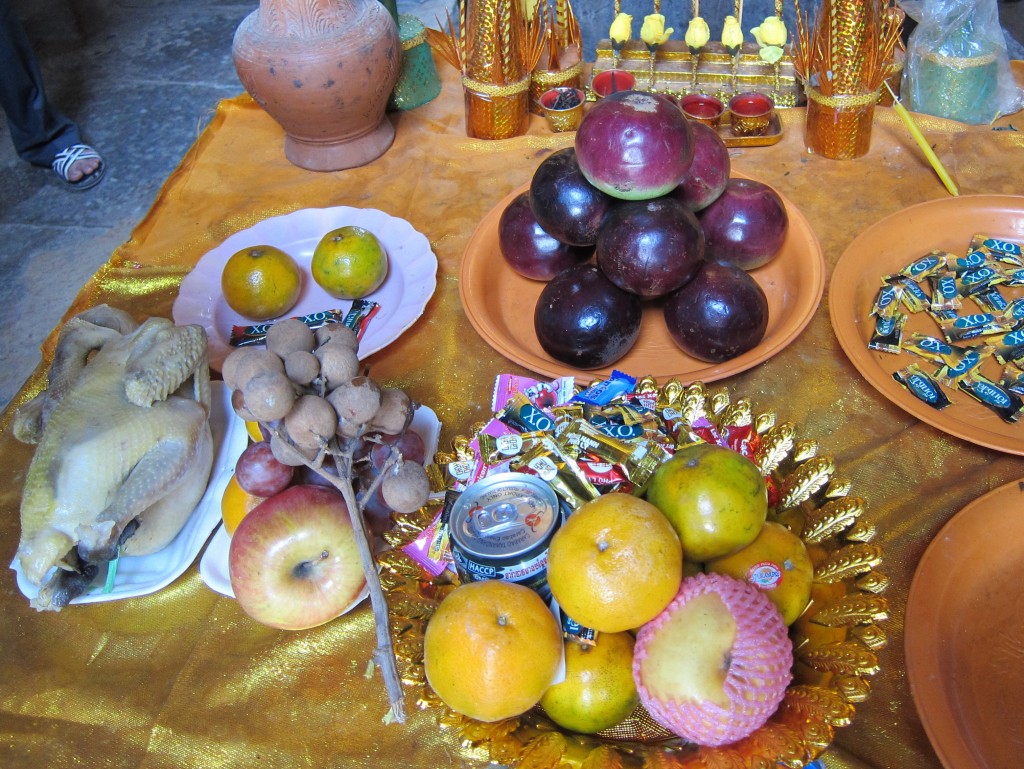
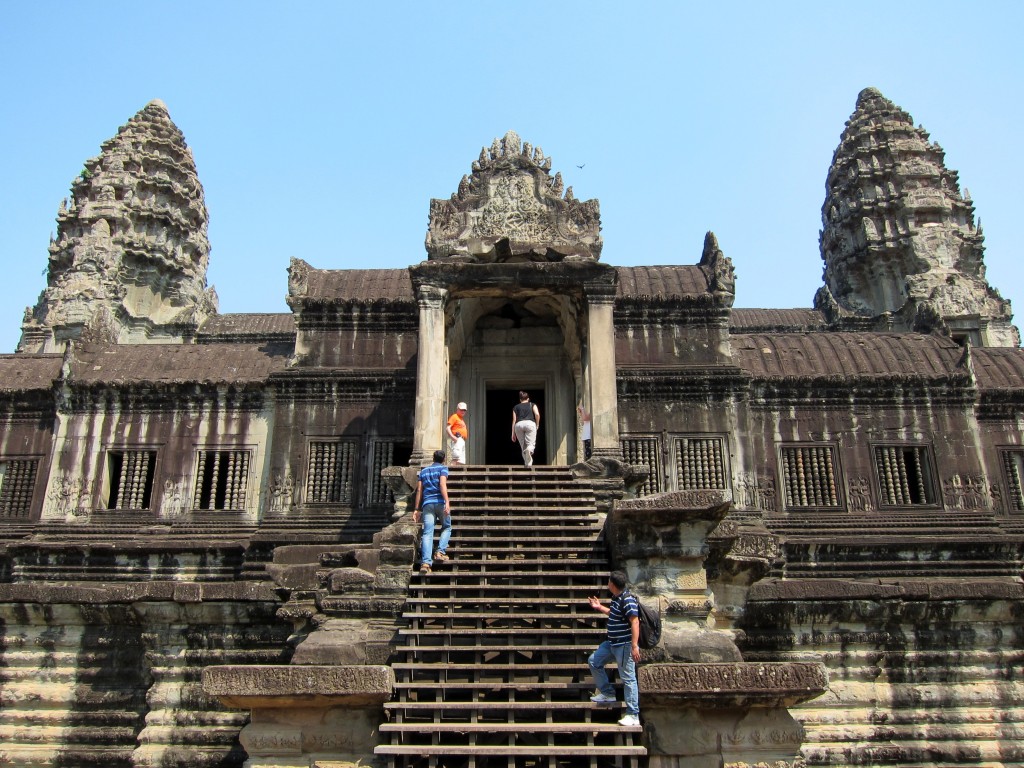
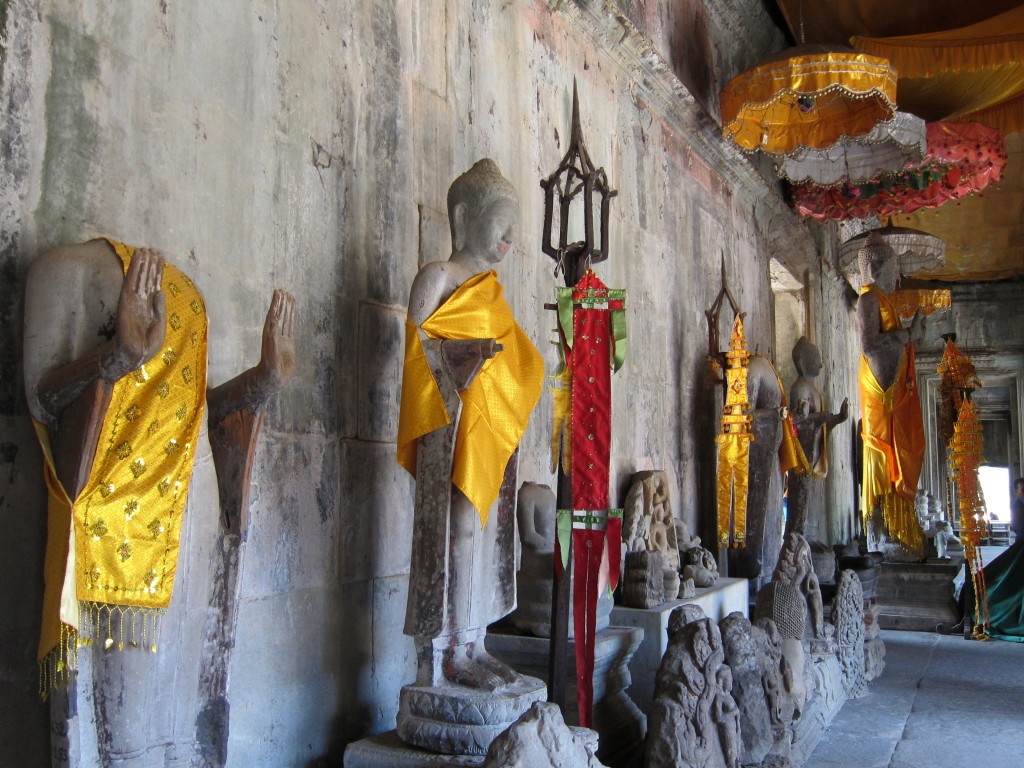
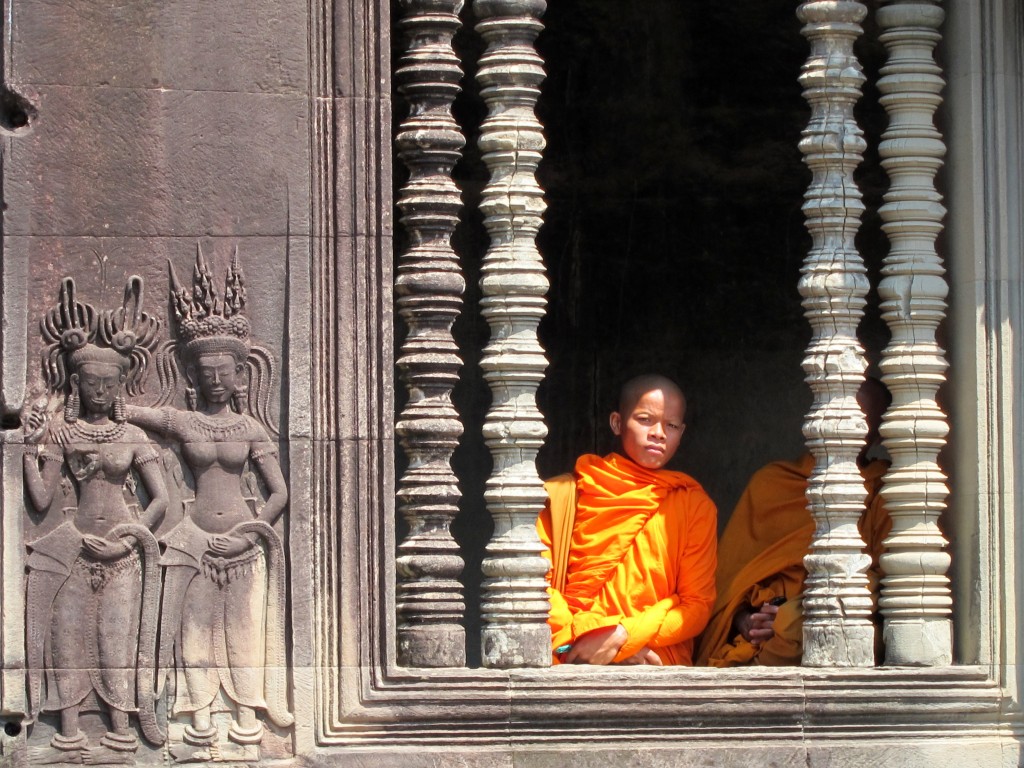
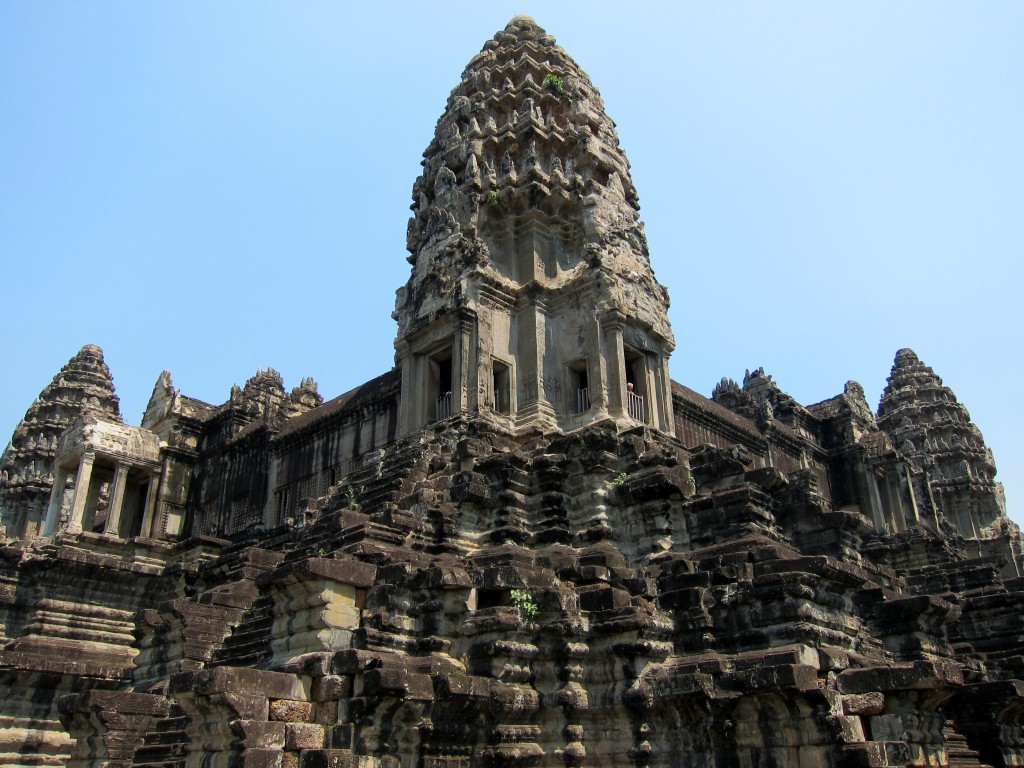
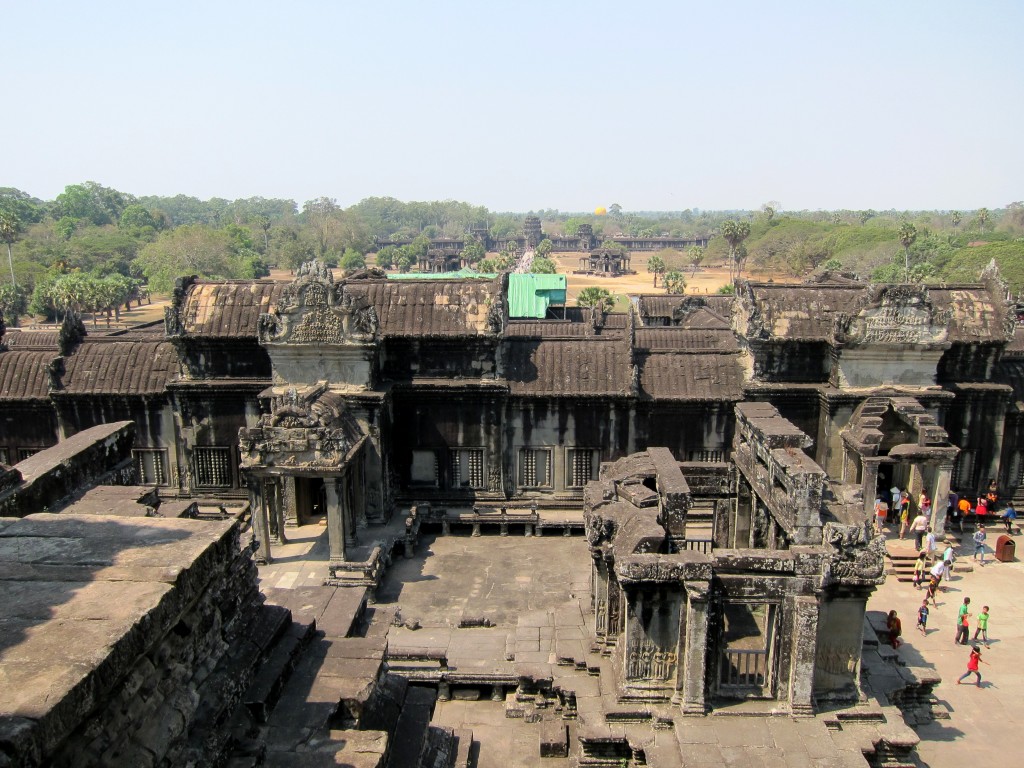
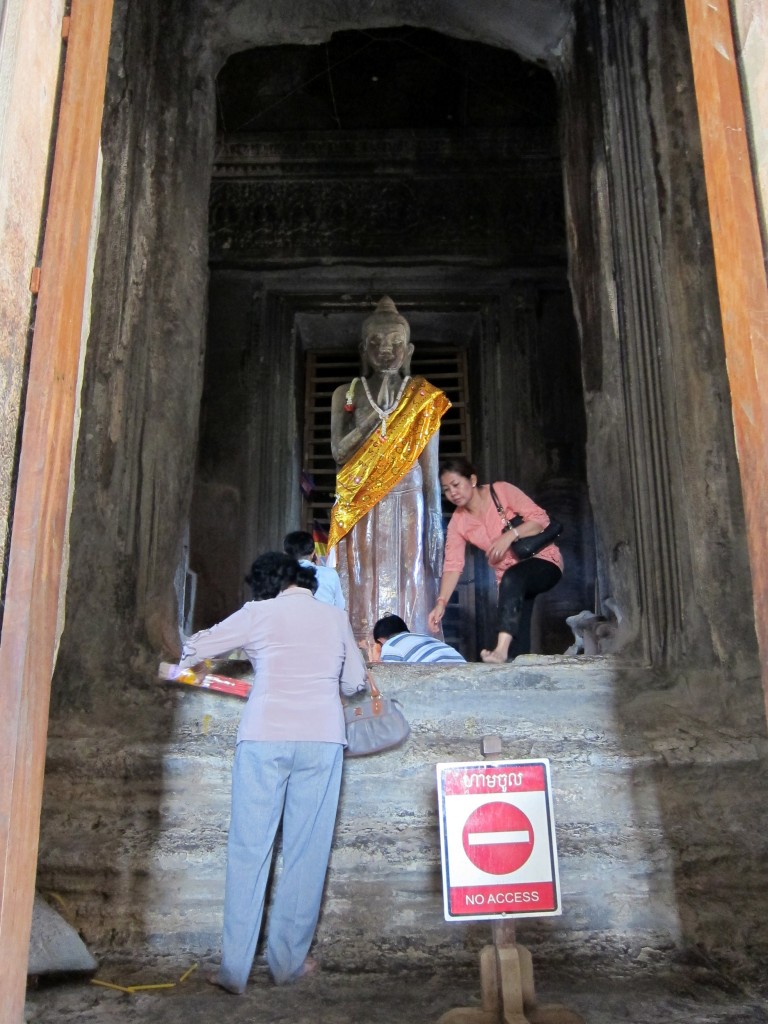
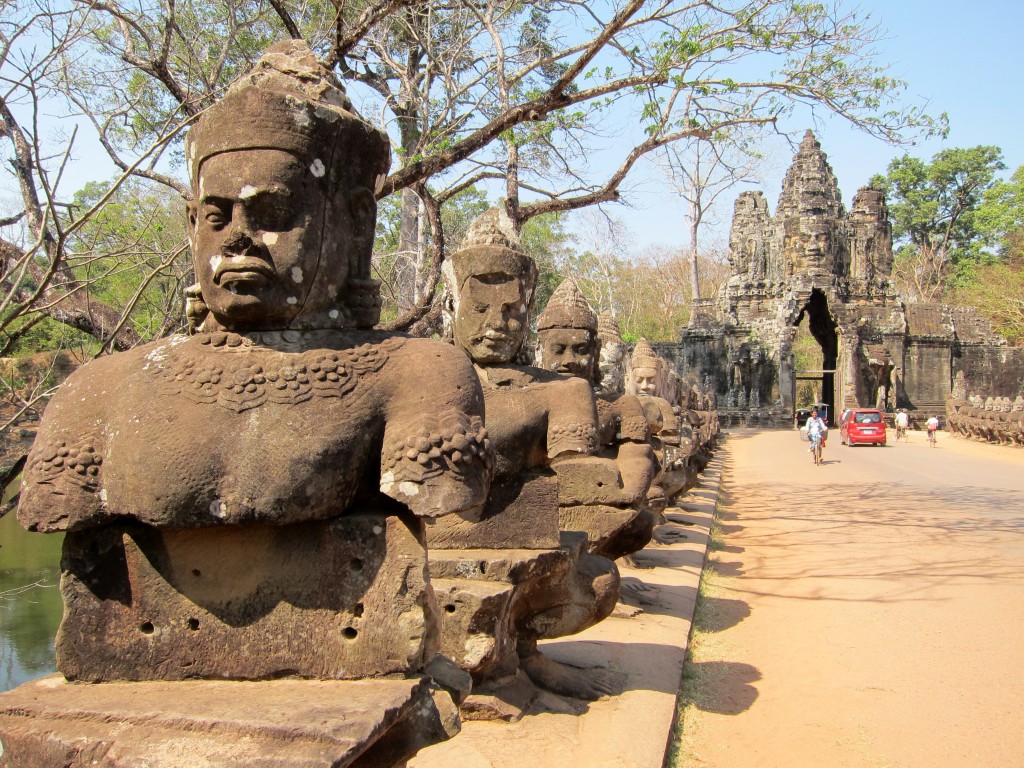
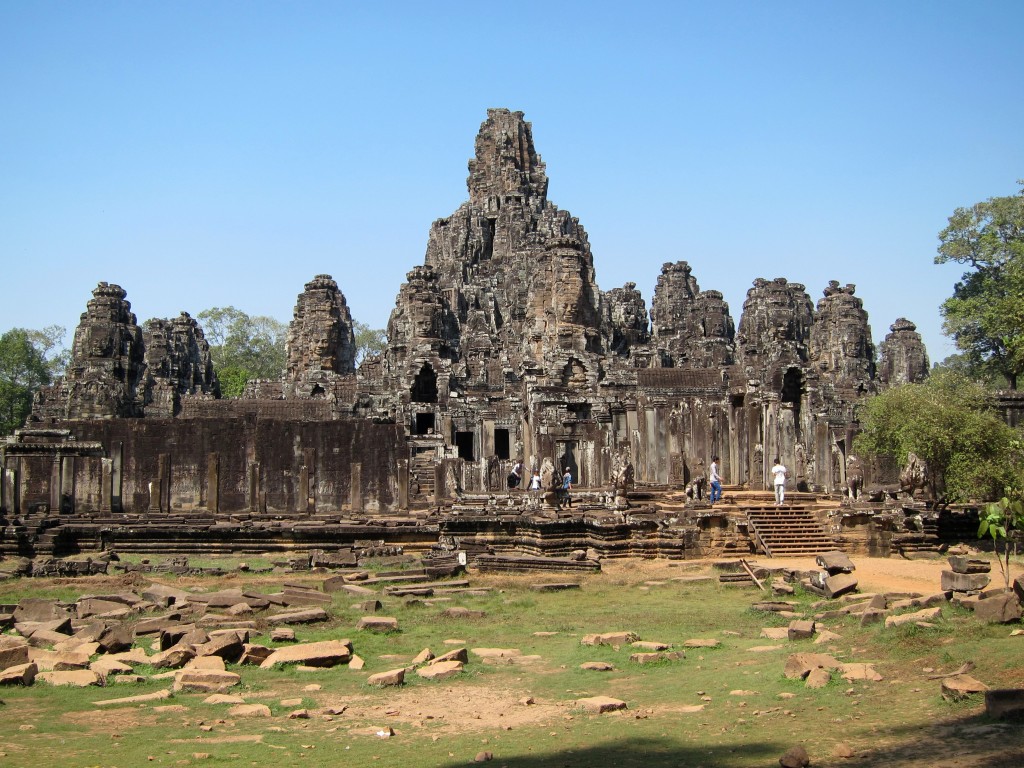
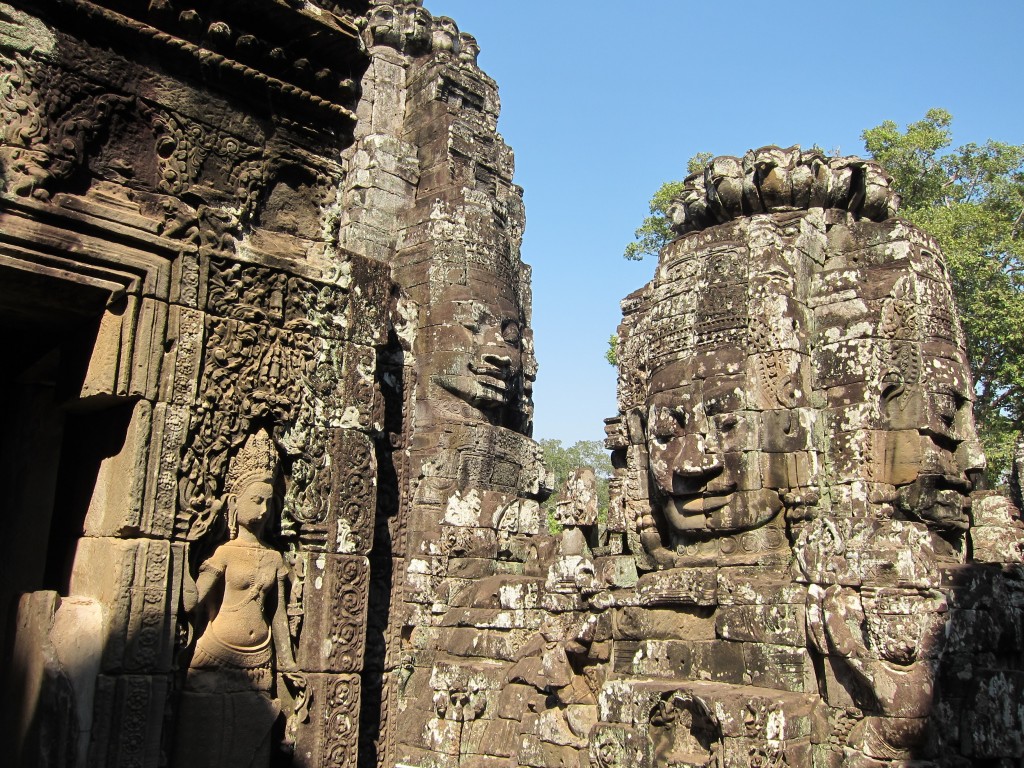
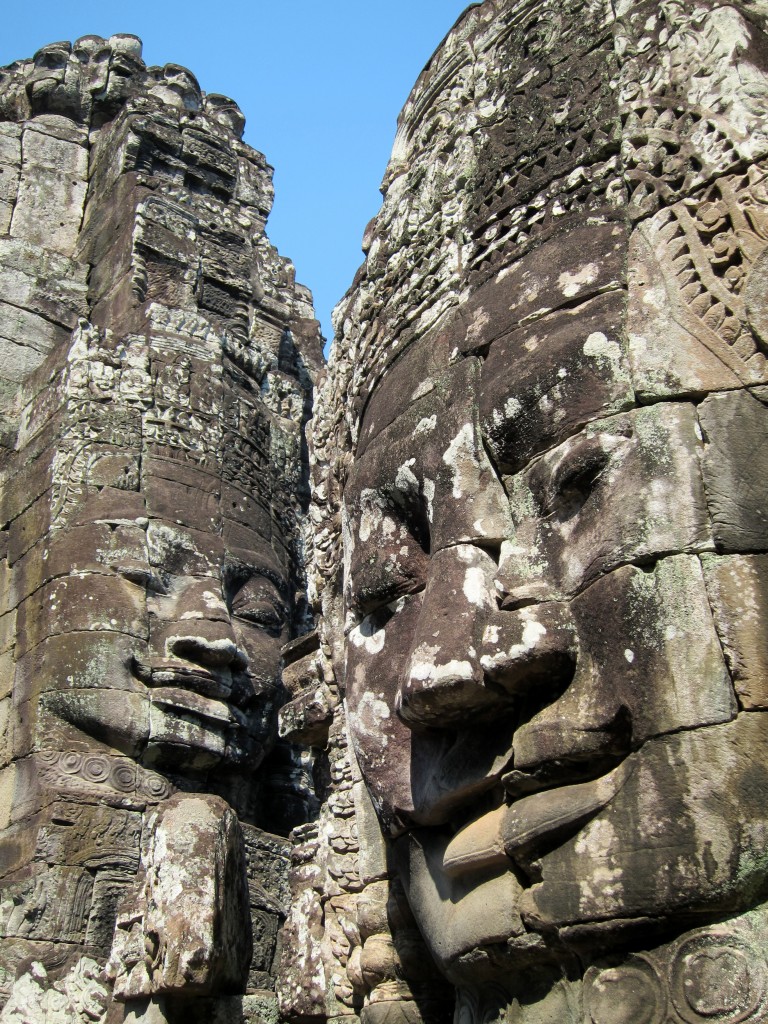

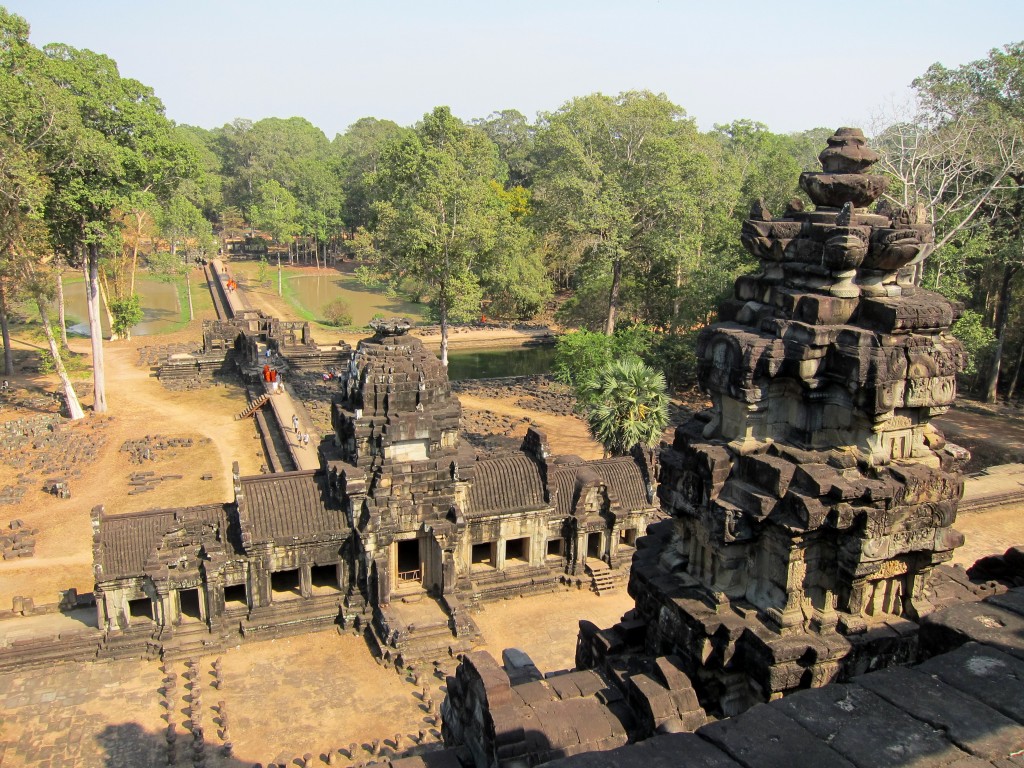
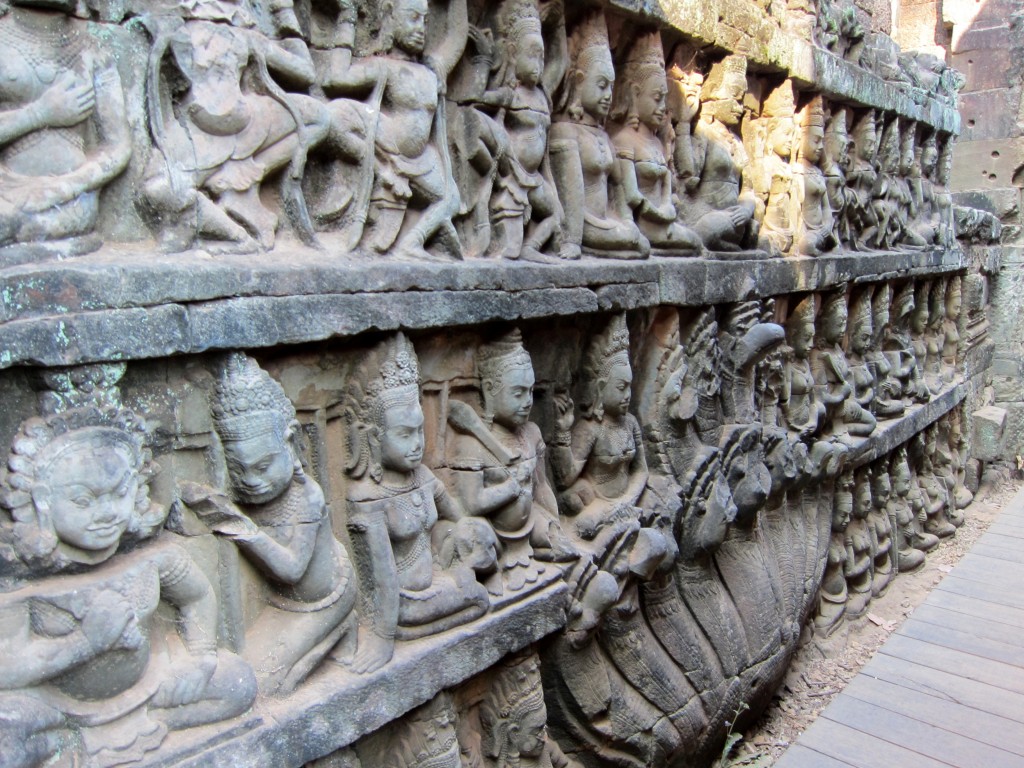
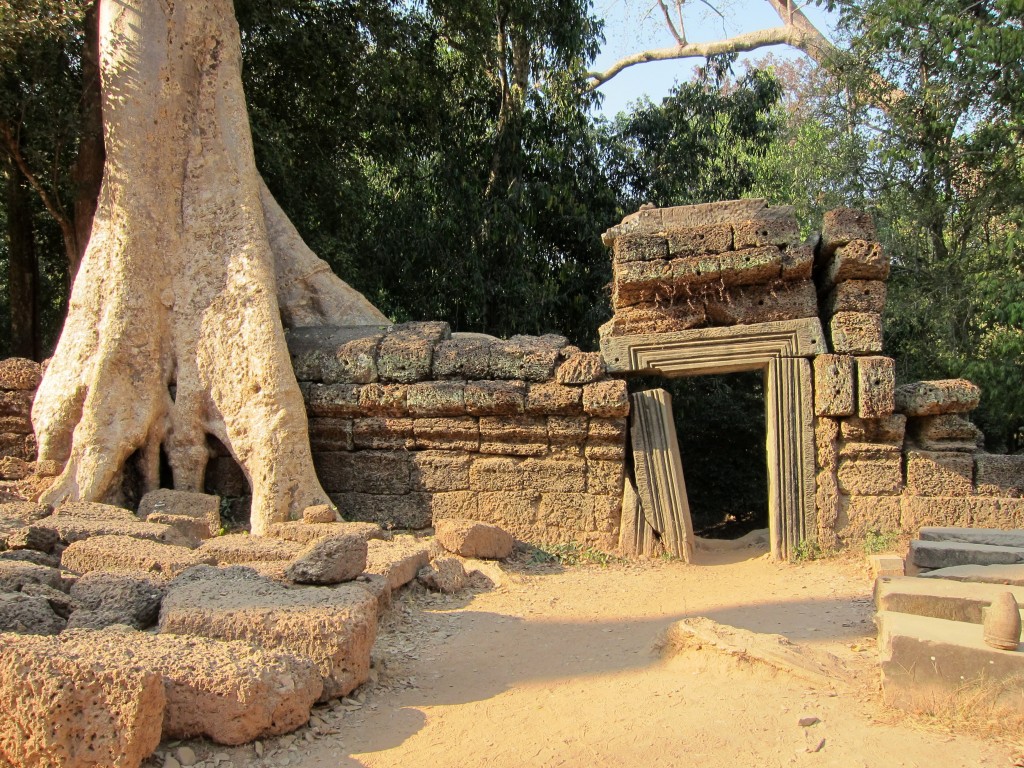
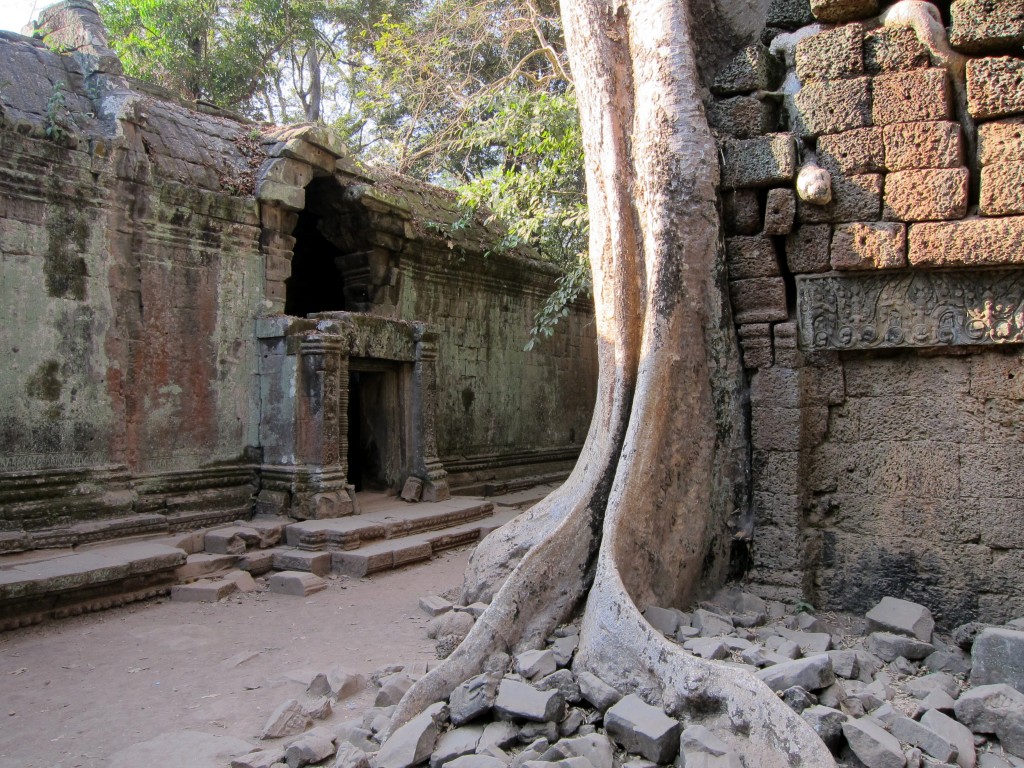
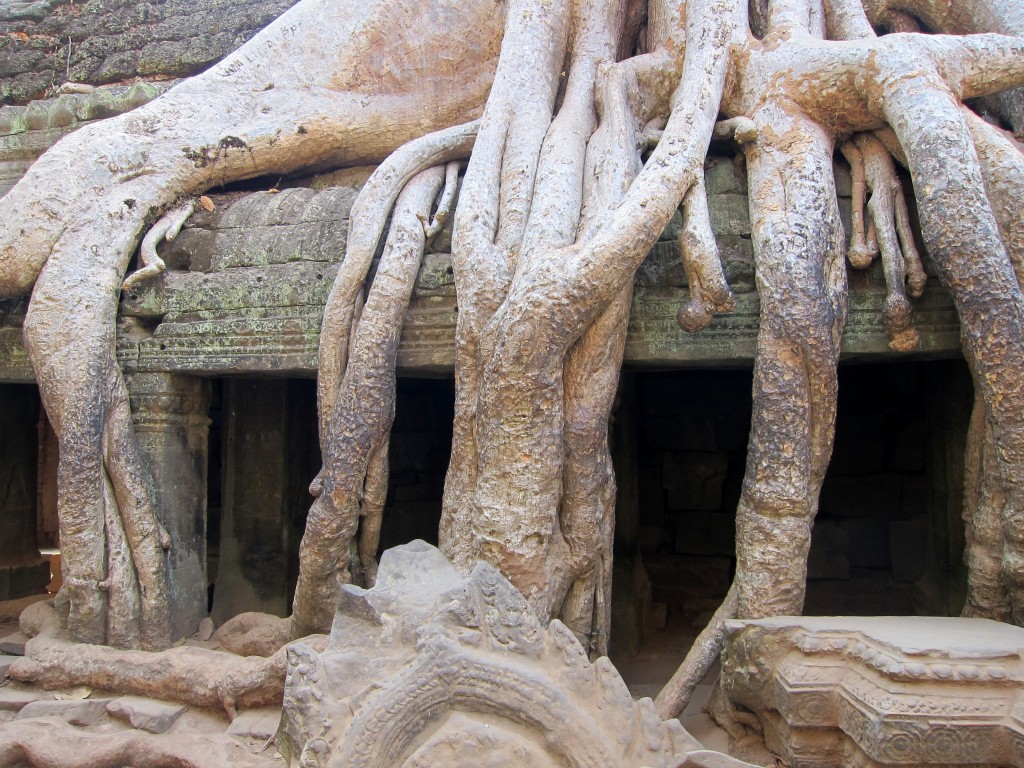
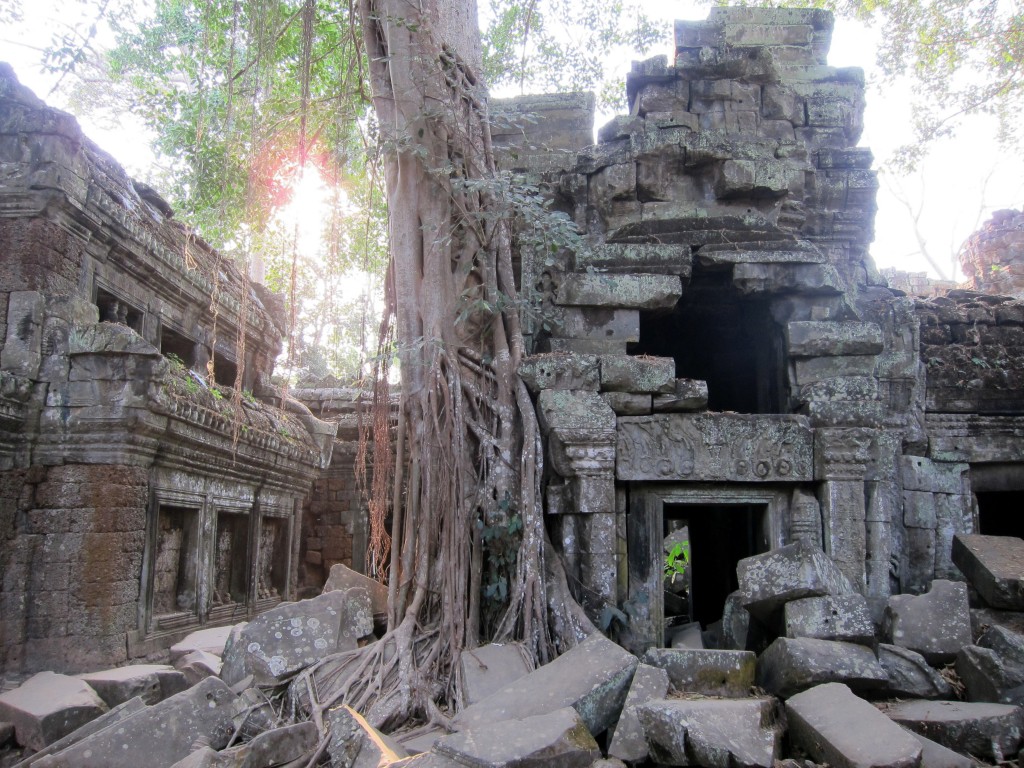
All I can say is wow! These pics are fantastic. I’m thinking of spending 6 weeks in Asia and I haven’t decided where so I’m glad I now have this blog as a reference. Thanks!
Thanks so much! We absolutely love Southeast Asia – the people, the food, the architecture, the weather. It’s a special part of the world and we hope to spend lots more time there. You should definitely add it to your travel itinerary! (Japan is pretty amazing too!)
Thanks for the walk down memory lane. “Splendor” indeed, Angkor Wat is truly amazing – I must go back there again to see more of those incredible temples!
We’re already talking about going back in July! It was just amazing.